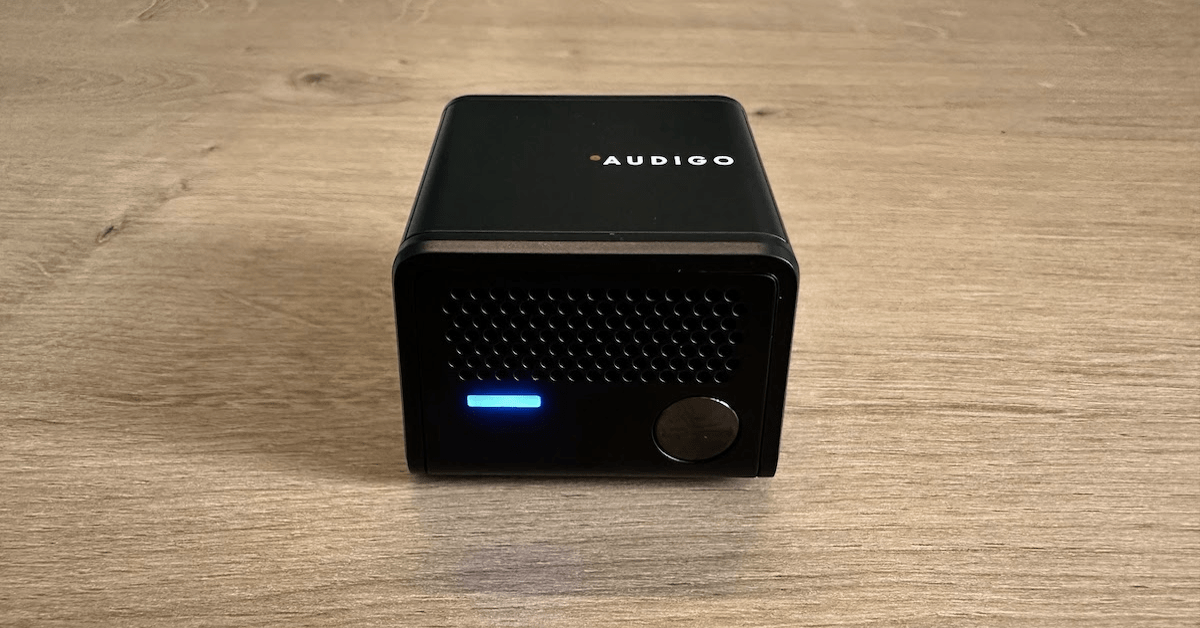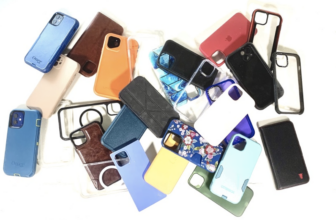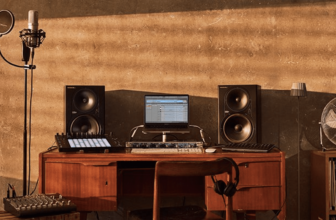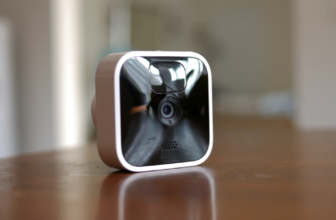
Audigo, a pioneering product in the realm of audio recording, introduces a compact stereo condenser microphone that wirelessly connects to a dedicated iOS app, effectively transforming an iPhone into a versatile portable recording studio. This innovation is designed to cater to the needs of modern musicians and content creators, aiming to simplify the recording process without compromising on quality.
The heart of Audigo’s functionality lies in its ability to seamlessly integrate audio and video recording. Users can position the microphone close to the sound source, such as the soundhole of an acoustic guitar, and simultaneously place the iPhone further away to capture a comprehensive video shot. This dual capability ensures that both audio and visual elements are recorded in harmony, an essential feature for creating professional-grade content.
Audigo’s microphone, approximately the size of two matchboxes, is packed with advanced technology. It houses two mid-side high-sensitivity condenser capsules that adeptly capture audio signals. These signals are then stored directly onto the microphone’s internal memory. Once the recording session is complete, the microphone wirelessly transmits the audio data to the Audigo iOS app. Within the app, users have the flexibility to access, edit, and share their creations, thereby streamlining the post-production process.
The app itself offers a range of tools to enhance the recorded audio. Users can fine-tune their sound with EQ and reverb controls, adding depth and clarity to their recordings. For those utilizing multiple microphones – the system supports up to four – the app provides functionalities to mix the volume and panning of the recorded sounds. This feature accelerates the creation of a polished, export-ready video, underlining Audigo’s commitment to efficiency and quality.
From a design perspective, the Audigo microphone is both robust and portable. It boasts a solid build, with a reassuring weight and a rubber foot at the base to prevent slipping on surfaces. The microphone can be attached to a regular mic stand using the included magnetic attachment, allowing for conventional recording setups. With a 6-hour battery life and a 32GB internal storage capacity, Audigo ensures ample time for uninterrupted recording sessions.
Connectivity is a key aspect of Audigo’s performance. The microphone establishes a seamless connection with the app using Wi-Fi and Bluetooth 5.2 technologies. During testing, no issues with signal drop-outs were observed, highlighting the system’s reliability. In cases where connectivity might be lost, the recordings are safely stored on the microphone. These can later be transferred to a computer via a USB-C port, ensuring that no data is lost.
One limitation of the system is the video recording functionality, which is bound to the settings offered by the app. While the app supports 24/30fps footage in 4K, it restricts access to some of the advanced features native to the iPhone’s camera. This constraint may not be a significant concern for most users, but it’s a factor worth considering, especially for those seeking extensive control over their video settings.
In contrast, the capacity to use up to four Audigo mics simultaneously stands out as a remarkable feature. This multi-mic setup opens up a plethora of possibilities for recording various sound sources, such as a drum kit, bass amp, acoustic guitar, and vocals, all in one go. The app adeptly handles multiple audio streams, allowing real-time mixing, panning, and effect application, all while keeping the audio perfectly synced with the video. This capability sets Audigo apart in the market, especially for users looking to capture complex audio setups without resorting to high-end dedicated video equipment.
The Audigo package is particularly appealing to those with extensive experience in videography. Traditionally, recording sessions involve setting up dedicated cameras and audio recorders, along with managing multiple microphones and dealing with the associated clutter of cables. Audigo simplifies this process significantly. Users can simply turn on the mics, open the app, and start recording. This ease of use is a game-changer, especially in scenarios where setup time and simplicity are crucial.
In practical testing scenarios, Audigo proved its worth. The process of setting up the mics and recording was straightforward and intuitive. The app’s ability to adjust audio settings in real-time, using a user-friendly interface, was particularly impressive. Users do not require extensive knowledge in sound engineering or videography to leverage the full potential of Audigo. The final mixing and exporting options are equally efficient, offering flexibility in terms of output formats suitable for various platforms, including YouTube and social media.
While Audigo does offer a subscription model that includes cloud storage and additional effects, its core functionality remains accessible to all users, regardless of their subscription status. However, it’s important to note that Audigo is currently only compatible with Apple devices, limiting its availability to a specific user base.
In conclusion, Audigo and its accompanying iOS app represent a significant advancement in the field of audio and video recording. Aimed primarily at musicians and performers, this system offers a highly portable, user-friendly, and efficient solution for capturing high-quality audio and video content. Its ability to handle multiple microphones,





